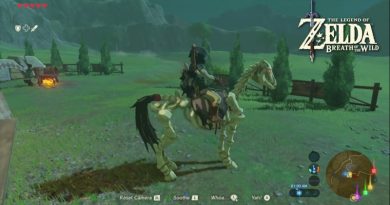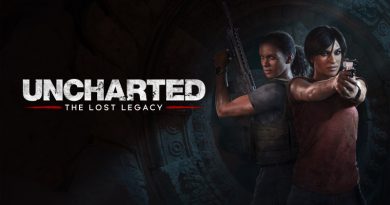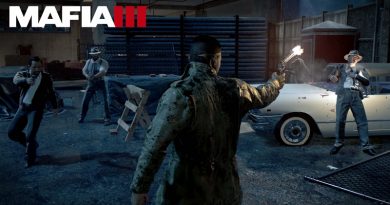Overwatch Complete Beginners Guide
Overwatch Complete Beginners Guide
In Overwatch Complete Beginners Guide we will be looking at everything from heroes to game modes as well as whole ton of tips and tricks to help you get the edge on your opponents. Overwatch is an action hero based FPS game with multiplayer elements where you have 21 different and unique characters. Each character in the game has unique personality and abilities.
Overwatch is pretty ambitious game from Blizzard Entertainment, and it is now available on PC, Xbox One and PlayStation 4. Overwatch features a squad based combat where 2 teams of 6 heroes each will be fighting against each other in different game modes. So let’s get started with hero roles;
Overwatch – Hero Roles:
Overwatch features total of 21 unique characters which are divided into 4 separate groups; Offence, Defense, Tank and Support. Offence heroes are mobile and deal high amounts of damage but they have relatively small health. They excel at scouting and harassing enemies as well as pressing objectives. Defensive heroes specialize in locking down specific area and protecting key objectives. They are generally capable of dealing high amounts of damage and form the back line of their team.
Tanks have the largest health pools of all the heroes and often also equipped with abilities which allow them to protect their allies from incoming damage. However, their larger player models make them an easy target for the enemy. Finally Support Heroes assist and buff their team to a variety of abilities. However, they are poorly matched in 1v1 fights and need to be protected by their team.
Well, these roles give you general idea for the characteristics of each hero, they’re by no means absolute and each is capable of fulfilling a variety of different play styles. You can also change through heroes throughout the and finding the correct team composition is absolutely critical.
Overwatch – Hero Abilities:
Each hero in Overwatch is extremely unique and they’re all equipped with their own set of weapons and abilities. Most heroes in Overwatch have one basic attack, two standard abilities and one ultimate ability, although, there are exceptions. Each hero also has a melee attack that deals 35 damage. Most standard abilities also have a cool down that must be reset before they can be used again.
Ultimate abilities, however, must be charged before they can be used. These Ultimate charges can be gained slowly overtime or also by dealing damage or healing allies. Your ultimate charge is not lost on deaths.
Overwatch – Health Armor and Shield:
Depending on what hero you play as, you spawn with varying combination of Health Armor and Shield. Additional Shields and Armor can be acquired from certain hero abilities. In combat these three elements function in layers with shields being removed first then armor before damage is finally dealt directly to your health. Once your health reaches zero, your hero dies.
The shield is represented as blue area on your health bar and they function in very similar manner to your health. However, they also regenerate after not taking damage for 3 seconds. Shields can also be replenished through healing allies and health packs.
See Also: Overwatch Crashes, Errors and Fixes
Once your shield is depleted, damage is the dealt to your armor. Armor is designated by the yellow area on your health bar and takes damage at a reduced rate. Depending in the source of the damage, armor will remove 5 damage from each attack, meaning it is extremely effective fast firing heroes like Tracer and less effective against large single instance damage like Widowmaker. Armor can also be broken down into 2 types which is natural armor which consists of armor hero spawn with and given armor from abilities like Torbjorn’s armor pack. Natural armor can be healed but given armor can’t.
Finally, once your shield and armor are depleted, damage is dealt directly to your health pool. Health is designated by the white area on your health bar and function just like it does almost in any other game. It can be healed by both health packs and supporting hero’s abilities but it will not regenerate on its own with the exception of Mercy.
Overwatch – Hero Selection and Counters:
Now you know about different hero roles and their abilities, let’s take a look at some key factors to help you dominate your games. The single most important factor to winning rounds in Overwatch is hero selection. Regardless of skill, the team that starts with intelligent team composition and then continues to adapt those hero choices throughout the game will almost always come out on top.
Your team should generally consist of diverse hero roles at least one Healer and one Tank in each team. Pay attention to the tip section of Hero Selection screen and if your team is missing a key hero role consider filling that spot yourself.
You should also change and adapt your team composition through each game in response to enemy team’s hero choices. Well, it does take some time to learn, each hero both counters and can in turn be countered by other heroes just like a game of Scissors Paper Rock.
Let’s take a look at Genji, Bastion and Winston as an example. Genji is a powerful counter of Bastion as his high mobility allows him to flank behind and attack Bastion’s vulnerable core. While he can also reflect Bastion’s high damage cannon back at him for an easy kill. Meanwhile Winston is a great counter to enemy’s Genji, his lightening canon can’t be deflected and his leap ability allows him to chase Genjo before he can escape. And finally Winston’s large hit box makes Winston an easy target for Bastion who can eliminate high HP hero in a matter of seconds.
This is just one example of the many Scissors Paper Rock relationships which exists between heroes in Overwatch. Learning these counters and changing heroes to counter the enemy team’s composition will give you incredible edge to win your games.
Overwatch Headshots and Health Packs:
Two other important gameplay elements which are key to winning your fights in Overwatch are headshots and Health packs. Like many shooters Overwatch has a headshot function and scoring a headshot in Overwatch will deal double damage and also trigger a unique headshot sound. Almost all weapons in Overwatch are capable of scoring headshots from Widowmaker sniper to Tracer’s pulse pistols with some obvious exceptions Pharah’s rockets.
While dealing bonus damage through headshots will help you win your fight it’s also equally important to try and topped up on health at all times. When there are no Supports around, Health packs are the best way to stay stay topped up on health throughout the game. Health Packs have set spawn locations in every map with small health packs restoring 75 HP and large health packs restoring 250 HP. These packs will re-spawn short time after being used and knowing the location of these packs is extremely important., especially when flanking heroes.
Overwatch Game Modes:
Overwatch has 4 core game modes, Escort, Assault, Hybrid and Control maps. In Escort map, the attacking team attempts to push the payload to the final capture point while the defensive team attempts to hold them back until time expires. The payload will move whenever allied heroes are around it and its speed will increase with every additional hero within its range up to a maximum of three.
In Assault, the attacking team sets out to capture several objective points in a certain order. Points are captured by standing next to the objective area. Meanwhile the defenders must try to keep the attacking team off the objective area and stop points being captured until time runs out.
Some maps combine both Escort and Assault, creating a Hybrid map in which the attacking team must first capture an objective point after which the payload is released and they must push it through to the final capture point.
And finally, the Control maps have three stages in which teams fight to control a single stationary point for a certain amount of time. These maps are played as a ‘Best of 3’ or ‘Best of 5’ in competitive mode. Point capture, payload and hybrid maps have a set up time at the start of each round, during which the attackers cannot leave spawn and defenders can prepare for enemy attack.
Overwatch General Tips:
Now we’ve talked about various heroes, modes and how they all function, we’re going to finish this Overwatch Complete Beginners Guide with some general tips which would give you a certain edge on your enemies.
Ultimate Saving:
One of the common mistakes made by beginners and experienced players alike is to save your Ultimate ability. Waiting for that perfect scenario where you have to wipe the entire team. While Ultimate abilities are extremely important and certainly should not be wasted. These abilities can also be charged relatively quickly, don’t hesitate to use your Ultimate ability even if the scenario isn’t perfect.
Most classes are able to charge their Ultimate in less than a minute and frequent regular use will have a much more disruptive impact on the enemy than getting a single and great team wipe once throughout thee game.
Focus Supports:
Another key factor in winning your fights is focusing supports. Support Heroes in Overwatch have incredibly powerful team buffs and ultimate abilities. Most of them are, however, easy to kill when isolated. In the heat of battle, it is almost always a good idea to focus supported heroes first before turning your attention to their allies. As eliminating those key buffs and ultimate abilities from the fight will often means the difference between domination or getting dominated.
Flexible Hero Changing:
We’ve already talked about hero selection and team composition through out this Overwatch Complete Beginners Guide, but I really want to reinforce just how important it is to change heroes throughout game, if your current character simply isn’t working. Sometimes this will mean losing already built up ultimate charge but having a more appropriate team composition should always be your number one concern.
Settings:
Optimizing your in-game settings to fit your personal play style is also a must. Well many in-game settings are very much a matter of personal preference, it is almost always advisable to have your in-game kill feed turned on as well as having your FOV (Field of View) set to the maximum to 103. As both these settings will give you much more awareness in fights.
Team Work:
And finally, always remember that Overwatch is a team game, attempting to run and capture objectives alone will almost always result you being sent straight back to spawn room. Communicate with your team to coordinate objective pushing, Ultimate combos and team compositions and your win rate will sky rocket.
That’s it for this Overwatch Complete Beginners Guide, if you have some other tips for winning fights in Overwacth, please feel free to tell us in comments belwo.






